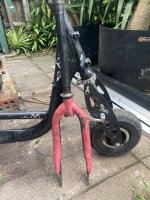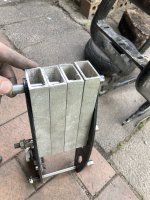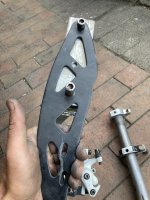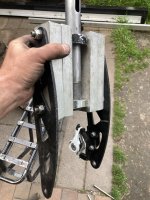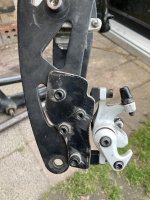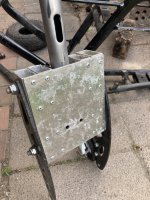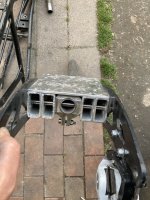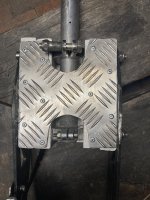I haven’t seen this done before, so it might be of interest to someone with similar criteria to me.
I need a form of transport for couriering a mentally disabled person that comes closer to complying with the local vehicle regulations than what I’ve been using to date does.
This is the best that I can come up with to avoid confiscation, huge fines, and loss of driver’s licence.
It’s a compromised design, not really what I want. The small wheels are frustrating, but this has to look as much like a traditional stand-up scooter as possible to avoid attention.
It’ll be ugly, because it’s only required for a year or so, and therefore knocked together cheaply with whatever parts I have laying around.
I’m aiming for total weight around 30kg.
The passenger seat cannot resemble a seat, unfortunately, because the scooter must “be designed for a single person”. The fine for carrying a passenger is only $200. That’s ok, but I cannot run the risk of the scooter being deemed to have been “designed” for more than one person.
It’s also going to be a harsh ride. I have another equivalent full suspension frame, but I dislike the heavy steel and can’t be bothered tuning the suspension.
Anyway, enough of the preamble, it’ll mostly be photos from now on. I’ll snap them as I go, and add brief explanations.
I need a form of transport for couriering a mentally disabled person that comes closer to complying with the local vehicle regulations than what I’ve been using to date does.
This is the best that I can come up with to avoid confiscation, huge fines, and loss of driver’s licence.
It’s a compromised design, not really what I want. The small wheels are frustrating, but this has to look as much like a traditional stand-up scooter as possible to avoid attention.
It’ll be ugly, because it’s only required for a year or so, and therefore knocked together cheaply with whatever parts I have laying around.
I’m aiming for total weight around 30kg.
The passenger seat cannot resemble a seat, unfortunately, because the scooter must “be designed for a single person”. The fine for carrying a passenger is only $200. That’s ok, but I cannot run the risk of the scooter being deemed to have been “designed” for more than one person.
It’s also going to be a harsh ride. I have another equivalent full suspension frame, but I dislike the heavy steel and can’t be bothered tuning the suspension.
Anyway, enough of the preamble, it’ll mostly be photos from now on. I’ll snap them as I go, and add brief explanations.



